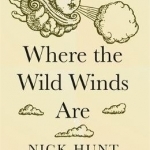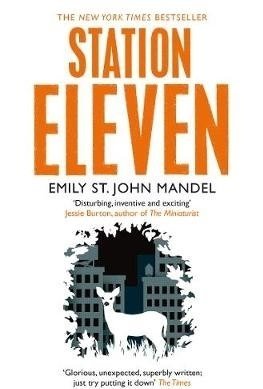
PlantSnap Plant Identification
Education and Lifestyle
App
Instantly identify plants, flowers and trees with PlantSnap by Earth.com, the mobile app built to...

Cyclemeter Cycling Running GPS
Health & Fitness
App Watch
Cyclemeter is the most advanced application for cyclists ever designed for a mobile device. Built...
health and fitness

Topo GPS Germany - Bundesland
Navigation and Travel
App
Makes from your iPhone/iPad a complete GPS device. Includes the topographic map of one German state...

City Island 4: Sim Town Tycoon (SD)
Games and Entertainment
App
Play the most popular city building simulation game series on mobile! In this new City Island sim,...

Runtastic Running & Fitness
Health & Fitness and Sports
App
We are #strongertogether! Join the worldwide community of fitness-minded folks (just like you!) who...
Bob Mann (459 KP) rated Passengers (2016) in Movies
Sep 29, 2021
The backdrop for “Passengers” is the spaceship “Avalon”, on a 120 year trip taking Earth colonists to the new world of “Homestead 2”. Following an ‘incident’ the story finds two individuals – Jim Preston, played by Chris “Jurassic World” Pratt, and Jennifer “Joy” Lawrence – as the only passengers awake on the automated ship among 5000+ other slumbering souls. It rather goes without saying that with two attractive and bankable Hollywood stars and nothing else to do, the two ‘get it on’. With things on the ship going from bad to worse, the two must work as a team to try to save the ship, crew and fellow passengers from disaster.
As a fan of sci-fi, I’ll start with a positive that the Avalon is a gloriously rendered spacecraft, and many of the scenes of space walking present beautiful cinematography (by Rodrigo Prieto of “The Wolf of Wall Street” and “Argo”). Many of the other special effects in the film – led by special effects supervisor Daniel Sudick, of the Marvel franchise – are spectacularly good, especially one which demonstrates why the lifeguards closed the pool on the International Space Station!
The overall premise of the film is also original and well-conceived, setting up the backdrop for some serious post-watch ethical debate (see spoiler section).
Where the wheels came off for me though is with the script by Jon Spaihts (“Prometheus”, “Doctor Strange”). Some of the dialogue is just appallingly trite, and some of the supposed capabilities of our hero, Preston, are laughable. For example, he possesses an uncanny ability as “an engineer” to open a cabinet of electronics, scan the circuits and say “Nope – that all looks fine”: the next time my washing machine controller packs in, he’s going to be on my speed-dial for sure! And (cue trite line – “every component on the ship has a spare”) Preston immediately finds the required part (curiously, it’s right next to the failing component and not in Bay 67 on cargo deck 327!) and knows how to plug and play it as required.
Chris Pratt; Jennifer Lawrence
Pratt and Lawrence, with Pratt about to debug my washing machine controller just by looking at it.
But, for me, there was one particularly dire point in the script where Spaihts obviously forgets which film he’s writing the scene for and ‘goes superhero’: oh, hang on, Preston doesn’t HAVE any superhero powers! For me, any goodwill the story had built up through to that point get vented into space.
The director is Morten Tyldum, whose “Headhunters” I really enjoyed but who is probably more famous for “The Imitation Game”. Not overawed by the production’s scale, he does a great job of getting good performances out of the rather wooden action hunk that is Chris Pratt and the reliable Oscar-winner Jennifer Lawrence who (apart from one dramatic and emotional scene) the script doesn’t really stretch. Michael Sheen is also a great watch as the witty and dry android bar-tender.
In summary, this was a nice premise with great special effects and gorgeous production design, but frustratingly let down with a weak screenplay. With a better script and another 10% of tweaking, this could have been a real sci-fi classic.
Hazel (1853 KP) rated Where the Wild Winds are: Walking Europe's Winds from the Pennines to Provence in Books
Sep 26, 2017
From the moment the great storm of 1987 almost blew six-year-old Nick Hunt away, he has had the urge to travel. So many travel books are on the market, it is difficult to produce something new and exciting, but after coming across an interesting map of Europe, Hunt was determined to go on a journey that not many have attempted before. With a map listing the named winds of Europe, Hunt sets off on a quixotic quest to follow the winds.
Beginning in the Pennine Mountains, Nick Hunt takes the reader on a personal journey through the continent as he explores the towns and valleys the winds flow through whilst hoping the elusive tempests will occur so that he can experience them himself. With a mix of euphoria and disappointment, Hunt details his arduous journey providing additional knowledge along the way.
Some winds are more evanescent than others – one, discouragingly, not appearing at all – whereas one is so strong, Hunt witnesses a waterfall being blown upwards. Ignoring the warnings of the locals, Hunt, dead set on completing what he intended to do, takes us on a long walk from Italy to Croatia, a trek through the Alpine valleys of Switzerland, and a final expedition to the south of France.
Wind may seem like an odd topic to write a book about, but the Helm, Bora, Foehn and Mistral are no ordinary breezes. Their violence makes Hunt’s journey a dangerous and daring endeavour and is full of stories about past disasters that have occurred as a result of the strong, temperamental weather.
As well as teaching us about these four winds, Nick Hunt has collected facts and stories about the general areas he passes through. Personal stories of the inhabitants break up Hunt’s narrative, however, myths, legends, history and superstitions frequent the lengthy chapters as much as the winds themselves.
Giving wind a name provides it with a personality, as though it is something tangible that can be met and observed. Nick Hunt notes that artists such as Turner and Constable were interested in the weather and fascinated by the effects the wind had on the surrounding landscape. Another artist that was affected by the weather was Vincent Van Gogh - some of his paintings took place in France in the midst of the powerful Mistral. Just as the wind can be seen in his starry night skies, the scenery in France is evocative of a Van Gogh painting.
The winds do not only affect the lands they blow through, they have a strong impact on the wellbeing of the inhabitants. Some experience physical symptoms such as headaches, nose bleeds, dry skin and so forth, whereas others find themselves growing irritable, depressed and confused. The author himself has the opportunity to undergo the effects of these winds. Hunt also puts forward the suggestion that Van Gogh’s deteriorating mental health was a direct consequence of residing in the path of the Mistral.
From witchcraft to the Greek god Aeolus, there are a number of theories about why these strong winds blow. There are, of course, meteorological explanations, which Hunt attempts to explain, but admits he finds it as baffling as the next person. Regardless of the reason, these winds exist and it is captivating to learn about this aspect of Europe.
Where the Wild Winds Are: Walking Europe’s Winds from the Pennines to Provence is a fantastic, beautifully written book. Nick Hunt’s narrative is so personal that it becomes more than a travel documentation or informative non-fiction. As we read, we really get a sense of the emotions and physical hardship Hunt experienced, yet, at the same time, learn so much about European culture as well as, of course, Europe’s winds. Whether or not you are interested in travelling, this book will take you on a journey you will never forget.
Hazel (1853 KP) rated Touching the Rock: An Experience of Blindness (Notes on Blindness Film Tie-in) in Books
May 23, 2017
It is not often a blind man writes a book, and “write” is a word used due to the lack of a better. John M. Hull gradually lost his sight, registering as blind in 1980, a couple of days before the birth of his son. Although anticipating the event, John struggled to come to terms with his new circumstances and adjust to a new way of living. From 1983 through to 1985, John recorded his thoughts on tape, in diary form, as a way to ascertain and understand his predicament. Originally titled Touching the Rock (1990), John’s book has been republished as Notes on Blindness after the release of the film of the same name.
Initially, John made recordings every day, dictating the everyday occurrences he encountered. Amazingly, despite his disability, John was able to continue as a university lecturer and delve deeper into the world of theology. The way John thinks things through as he speaks reflects his academic abilities. Although he may have despaired at the thoughts of not being able to see his children, he had a fairly positive outlook on life.
John’s thought capacity and religious ideology are evident in his assemblage of diary entries. As a blind person, he learns to see the world in an alternative way, and often feels closer to God as a result. Through these new experiences, John begins to see the light despite the darkness.
The metaphorical descriptions of blindness help the reader to understand the horror and difficulties not being able to see visually provokes. This is heightened by John’s recordings of the bad dreams he often suffers, in which he is able to see. His fixations on these dreams are assumedly a fascination with visual imagery, which he does not have access to in his waking life.
It is hard not feel sorry for John as he reports the conversations he has with his young children. The effort to communicate and play with them is far greater than a seeing parent. Remarkably, as John begins to adjust to his new lifestyle, his children take the situation in their stride.
Notes on Blindness is also an educational narrative for those without sight problems. John explains the things other people, in attempts to be helpful, do that result in making things far more confusing for John as he tries to navigate his way from one place to another. Despite what most think, blind people are fairly good at walking routes they are familiar with, and, with the help of a stick, can safely travel through new areas. Once people start shouting instructions, it is difficult to pay attention to the location and listen to everyone else at the same time.
John’s voice is extremely articulate, and his thoughts profound, which may suggest heavy editing when compiling the recordings into written form. However, as he is an academician, his eloquence of speech does not feel forced or faked.
Notes on Blindness remains the same as the original publication but with the added inclusion of an introduction by Cathy Rentzenbrink, and an epilogue by his wife Marilyn, written in 2016, a year after his death. These, the latter in particular, provide an insight into how John’s blindness affected those around him and emphasises what a truly remarkable man he was.
Of the many memoirs available on bookshelves today, Notes on Blindness is a truly unique publication. It is not telling a story, or recounting a well-lived life, but gives great insight into the world of the blind. As John’s thoughts were not originally recorded with intention of being available to everyone, they are all the more personal and honest, provoking emotion and providing the reader with a new way of seeing. It is a book that will stay with you for a very long time.
Hazel (1853 KP) rated Station Eleven in Books
May 30, 2017
The dystopian idea of a virus wiping out most of the world’s human inhabitants is not a new concept. It has be done and retold over and over again. Emily St. John Mandel’s invention of the Georgian Flu is no different from these. Brought to Canada and the USA by a passenger on a plane from Russia, the highly contagious virus spreads quickly from person to person, town to town, and once caught you are dead within forty-eight hours.
The difference between Station Eleven and other novels of apocalyptic themes is that the story takes place primarily in two time periods – pre-Georgian Flu and twenty years post-Georgian flu – rather than during the outbreak and the immediate days after (although there are a few scenes written within that timeframe). It is difficult to explain the storyline without giving too much away. Although the death of millions of people is a vital feature, it is the lives of the characters that are important. All the significant characters are in some way linked to one man, Arthur Leander, and, particularly in the case of one individual, a graphic novel titled Station Eleven.
The book opens in Toronto with Arthur, a Hollywood actor, starring in a stage production of King Lear. Despite the quick reaction of trainee paramedic Jeevan, Arthur dies of a heart attack after suddenly collapsing during the forth act. Then suddenly, that same night, the Georgian flu makes its first appearance in Canada. Despite this occurring right at the beginning, it is not the last the reader sees of Arthur. Throughout the story the author returns to Arthur, recounting scenes of his life from acting career to his three ex-wives and only child.
Twenty years after the Georgian flu, Kirsten Raymonde, who starred as a child in the same production of King Lear, is part of the Traveling Symphony: a group of actors and musicians walking from decaying-town-to-town performing a number of Shakespeare plays as they go. With her she carries two Station Eleven comics that Arthur gave her before he died – incidentally written and drawn by his first wife. Most people that the Symphony encounter are accommodating and are trying their best to live in a world of no electricity or health care, but then they meet a man who calls himself the Prophet. Believing that he has been given a duty by God to repopulate the world he preaches to the people telling them that everything happens for a reason, likening the epidemic to Noah’s flood in the Bible. However it soon becomes clear that he is a dangerous character.
In a way it is heartening to imagine that high culture (such as Shakespeare and orchestral music) survives in a world that has been destroyed. Shakespeare was born in a time before all the modern inventions relied upon today, and now, in this novel, it is once again an electricity-less era yet these historical things live on.
One problem with Station Eleven is that it is hard to pinpoint the exact plot line. There is the life story of Arthur Leander, his wives and a close friend. Then there is Kirsten living a completely different life. Nonetheless it is still an incredibly fascinating book. Although it flits between time periods it is thankfully not as confusing as some may imagine it would be.
Even though dystopian novels of this nature have been done before, Station Eleven is definitely a book to read; and through it all it poses the question of how you, the reader, would survive in such a world.
Phillip McSween (751 KP) rated Pootie Tang (2001) in Movies
May 3, 2018
Acting: 10
Beginning: 10
Characters: 10
Pootie provides the most hilarious moments in the film. As it opens, Pootie is having an interview with Bob Costas and you quickly learn that Pootie speaks his own language literally. For the sake of this review, let's call it Pootie Slang. The audience doesn't understand Pootie Slang, but the world he lives in can somehow make out every word he's saying. Best example I can think of: Groot speech. The words he says are enough to make you laugh, but it's the confidence in which the lines are delivered that take it to a whole new level. Pootie's got swag. For whatever reason, the ladies love him and everyone respects him, including the "Tippy ties" (those are children, by the way). It's one of those films you have to see to understand.
If Pootie isn't enough, there's an array of characters that keep the film entertaining. There's Biggy Shorty (Wanda Sykes), Pootie's love interest who has an eccentric style of dress and will slap the taste out of the mouth of anyone that disrespects Pooty. Then you have Trucky, Pootie's loudmouth friend that basically lives off of Pootie's success. Dirty Dee (Reg E. Cathey), the dirty scoundrel who walks around constantly covered in muck. My personal favorite: Lacey (Mario Joyner) who has a special knack for repeating everything a person said as if it were his idea. I could go on...
Cinematography/Visuals: 7
You haven't laughed until you have seen eight-year-old Pootie walking down a street while a woman three times his age throws his big wheel out the window because she's mad at him. You haven't laughed until you see Pootie's father get attacked at his job by a "gorilla" which is really someone in a gorilla costume. You really haven't laughed until you've seen Pootie record a song with absolutely no sound as he silently screams into the mic. And you really haven't laughed...well, you get my point.
Conflict: 10
Genre: 8
Memorability: 7
Pace: 7
Pacing was a bit spotty at times. When it's rolling, it's really rolling. However, there were a handful of dry spots where the film didn't seem like it knew where it was headed.
Plot: 6
The plot is all over the place at times, like watching a grenade explode. It has a direct line of sight, sure. There is a clear beginning, middle, and end. It's all the filler between these three things where the film goes south. There is a bit of forgiveness here as Pootie Tang manages to stay humorous even when it's confusing. Sometimes the confusion is what makes things funny. The writing definitely could have been stronger in certain points.
Resolution: 9
Overall: 84
Will Pootie Tang ever win an award for underrated comedy? No. Is it a pretty darn good time that makes you laugh consistently? Absolutely. It's dumb, but that's what makes it endearing. Honestly, I don't think it's any less dumb than a Bill and Ted film or *insert Pauly Shore film here* and those are regarded as cult classics. Just saying...Give it a chance. Maybe you hate it, but it's going to leave you laughing a few times and that's all that matters.
P.S.--Did I really just mention Groot and Pootie Tang in the same review? Wow...




